Audemars Piguet Watches
Below is our current in stock inventory of Audemars Piguet watches. If you have a Audemars Piguet watch you are interested in selling or trading please contact us.

(52092) Audemars Piguet 26470ST.OO.A801CR.01 Royal Oak Offshore SAFARI, 26470STOOA801CR01, stainless steel on a rubber strap(alligator "Hornback" strap on a stainless steel pin buckle, automatic, date window at 3 o'clock, chronograph, silver waffle dial with three brown sub-dials, brown numerals, sapphire crystal, water resistant to 10 atm, diameter: 42 mm x 54 mm, thickness: 14.6 mm, like new with AP box and papers from 2015.
$21,400
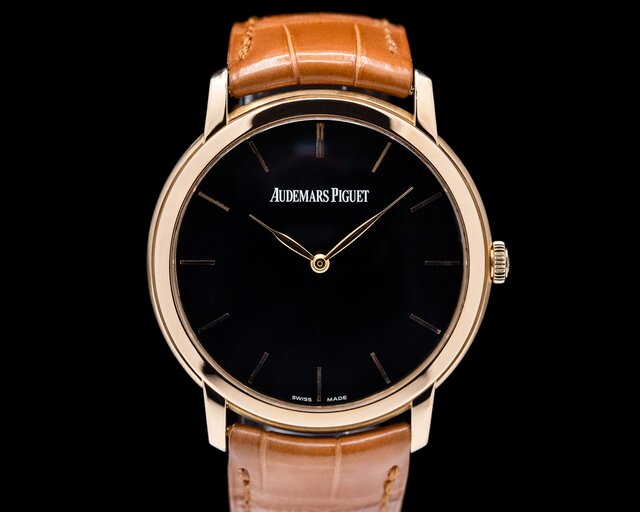
(50537) Audemars Piguet 15180OR Jules Audemars Automatic, 15180OR.OO.A002CR.01, 18k rose gold case on a strap with a rose gold tang buckle, automatic Audemars Piguet caliber 2120 movement, 60 hour power reserve, Black dial with applied rose gold stick indices, sapphire crystal, display back, water resistant. Like New with Audemars Piguet box. This watch was just completely serviced.
$14,900

(53116) Audemars Piguet 77350 Royal Oak Automatic, 77350CE.OO.1266CE.03.A, black ceramic on a black ceramic bracelet with a double deployant buckle, automatic AP caliber 3120 movement, black 'Grande Tapisserie' dial with applied luminous hour markers, date at 3 o'clock, display back, sapphire crystal, water resistant to 50 meters, diameter: 34mm, thickness: 8.8mm. Like New with Audemars Piguet box and new style QR warranty card.
$58,500

(53097) Audemars Piguet 26238CE Royal Oak Offshore Chronograph "The Beast" 26238CE.OO.1300CE.01, 30th Anniversary of the Royal Oak Offshore, black ceramic case on an integrated black ceramic bracelet with a titanium folding clasp, automatic AP caliber 4401 movement, black dial with Petite Tapisserie pattern with black counters, white gold applied hour-markers and Royal Oak hands with luminescent coating, black inner bezel, date win...
$99,900
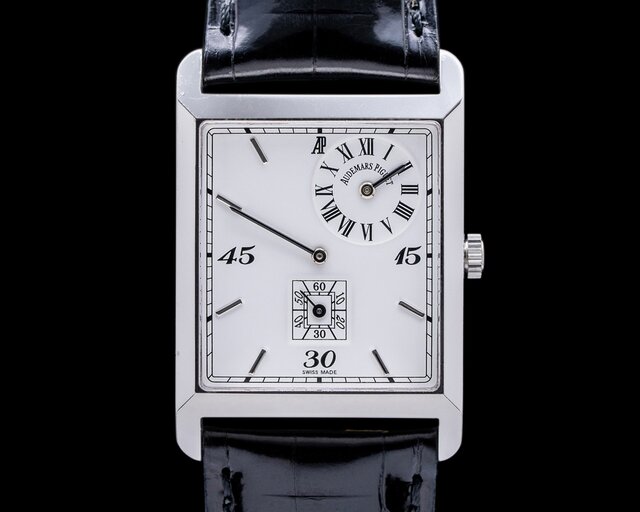
(50079) Audemars Piguet 25845BC Museum Collection Regulator, 2584BC.O.0002.01, 2584BCO000201, a unique reference from AP made in a limited number of pieces circa 2000. 18k white gold case on a strap with a matching 18k white gold tang buckle, manual wind AP Cal. 2085 movement, white dial with painted black Roman numeral hour markers, applied baton hour markers with Arabic numerals at the quarter hours, size 25.5mm x 36.5mm (includi...
$16,900

(53091) Audemars Piguet 26378IO.OO.A001KE.01 Royal Oak Offshore Arnold Schwarzenegger The Legacy Chronograph Limited Edition, 26378IOOOA001KE01, Limited Edition of 1500 pieces, black ceramic case on a fabric strap with an oversized titanium tang buckle, automatic Audemars Piguet caliber 2326/2840, date window at 3 o'clock, chronograph, black "Mega Tapisserie" dial with rose gold Arabic numerals, rose gold pushers with black rubber ...
$29,900
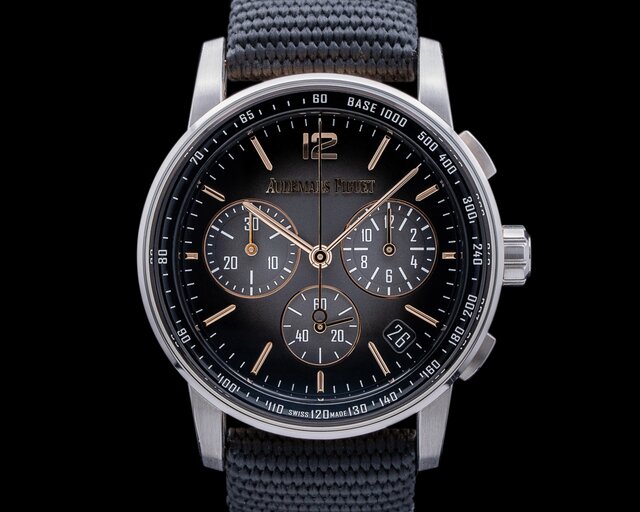
(53047) Audemars Piguet 26393CR Code 11.59 Automatic Chronograph 26393CR.00.A002KB.01, 26393CR00A002KB01, 18k white gold case with 18K rose gold octagonal mid-case and unique lug design, on a strap with a matching 18k white gold tang buckle, new in-house automatic AP caliber 4401 movement, 70-hour power reserve, smoked grey dial with applied rose gold baton hour markers, rose gold hands, date in between 4 and 5 o'clock, unique doub...
$31,900

(52176) Audemars Piguet 26187ST.OO.D801CR.01 Royal Oak Offshore Montauk Highway Limited Edition Chronograph, 26187STOOD801CR01, Limited to 300 total pieces, Stainless steel on a hornback alligator strap with a steel deployant buckle, automatic AP Caliber 3126/3840 movement, 12-hour chronograph, date at 3 o'clock, white tapisserie dial with brown subdials, light blue luminous numerals, sapphire crystal, water resistant to 10 atm, di...
$36,500

(52175) Audemars Piguet 26208ST.OO.D305CR.01 Royal Oak Offshore Chronograph Tour Auto limited edition of 150 pieces, 26208STOOD305CR01, stainless steel case/bezel on a blue hornback alligator strap with a stainless steel deployant buckle, automatic AP Caliber 3126/3840, 50 hour power reserve, chronograph, date, white Tapiserrie dial with red hour, minute and seconds hands, sapphire crystal, solid case back, 100m water resistant, si...
$32,500

(52833) Audemars Piguet 15400 Royal Oak 15400ST.OO.1220ST.02 15400STOO1220ST02, stainless steel on a stainless steel bracelet with a double deployant clasp, automatic Audemars Piguet caliber 3120 movement, engraved yellow gold rotor, silver waffle dial with luminescent hands and indexes, display back, sapphire crystal, water resistant to 50 meters, diameter: 41mm, thickness: 9.8mm. Like New with AP box and papers dated 2013. This w...
$34,900

(51944) Audemars Piguet 26170ST.OO.D305CR.01 Royal Oak Offshore NAVY, 26170STOOD305CR01, on a stainless steel bracelet with a double folding deployant clasp, automatic AP caliber 3126/3840 movement, date at 3 o'clock, chronograph, white tapisserie dial with 3 navy sub-dials and navy Arabic numerals, diameter: 42mm x 54mm, thickness: 14.2mm, sapphire crystal, water resistant to 10 atm. Like New with Audemars Piguet box.
$22,900

(52583) Audemars Piguet Royal Oak reference 15300ST.OO.1220ST.01, 15300STOO1220ST01, 15300ST, stainless steel on a stainless steel bracelet with a double deployant push-button clasp with large AP logo, automatic movement, white "waffle" dial with luminescent hands and indexes, engraved gold rotor shown through display caseback, sapphire crystal, water resistant to 50 meters, diameter: 39mm, thickness: 9.2mm. Excellent condition wit...
$30,500

(51157) Audemars Piguet Royal Oak Offshore SCUBA Boutique Edition, 15701ST.OO.D002CA.02, stainless steel on a rubber strap with a stainless steel deployant buckle, automatic caliber 2325 movement, black waffle dial with blue inner bezel, white luminescent numerals, date at 3 o'clock, sapphire crystal, water resistant to 300 meters, diameter: 44 mm, thickness: 12.8, Excellent condition with AP box and undated papers.
$21,100
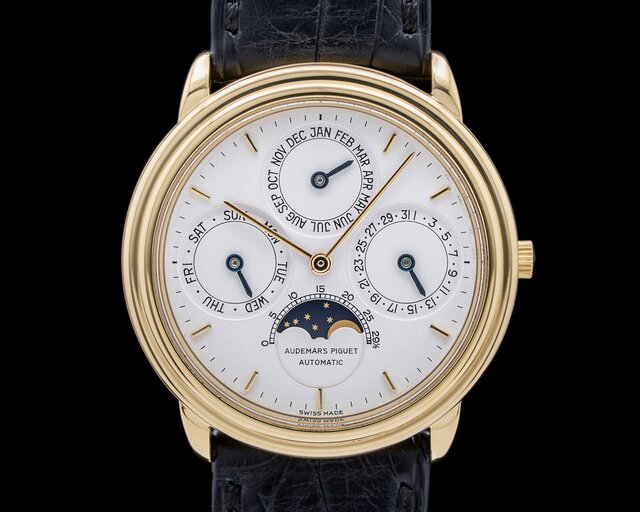
(52508) Audemars Piguet 25661 Quantieme Perpetual Calendar 25657BA.00.A002XX.01, 18k yellow gold case is extraordinarily sharp with hallmarks that are very bold and well defined on a strap with a matching 18k yellow gold tang buckle, automatic Caliber 2120/2, day, date, month, moon phase, applied yellow gold index hour indicators, sapphire crystal, the first AP Perpetual Calendar to feature a display back. Diameter: 36mm, thickness...
$30,900

(51123) Audemars Piguet 26300ST Royal Oak Chronograph 26300ST OO 1110ST 07 26300STOO1110ST07, stainless steel on an integrated stainless steel bracelet with a folding deployant clasp, automatic AP caliber 2385 movement, blue dial with contrasting white subdial rings, appied luminous hour markers, orange chronograph hands and accents, date in between 4 and 5 o'clock, sapphire crystal, size: 40mm, thickness: 14.2mm, water resistant t...
$30,900

(51978) Audemars Piguet 25770ST Royal Oak Offshore Tropical Chronograph, 25770ST.OO.D009.02, released at Baselworld in 1996 along with 7 other color variants, stainless steel case appears to be original finish with sharp lines, on a leather strap with a stainless steel deployant buckle, automatic Audemars Piguet caliber 2226/2840 movement, original yellow dial with luminous hour indicators and hands, silver ringed subdials, sapphi...
$19,800

(51868) Audemars Piguet 26703ST.OO.A027CA.01 Royal Oak Offshore Diver Chronograph, 26703STOOA027CA01, stainless steel on a rubber bracelet with a tang buckle, black ceramic crown and pushers, automatic AP caliber 3124/3841, 50-hour power reserve at full wind, blue "waffle" dial, running seconds sub-dial at 3 o'clock, 30-minute totalizer at 9 o'clock, luminous white gold hands and applied stick numerals, sapphire crystal and displa...
$26,500

(52976) Audemars Piguet 77451 Royal Oak Midsize, 77451ST.ZZ.1361ST.03, 77451STZZ1361ST03, stainless steel on a stainless steel bracelet with a double deployant clasp, automatic AP caliber 5800 movement, ice blue Grande Tapisserie dial with applied luminous hour markers, date at 3 o'clock, display back, sapphire crystal, water resistant to 50 meters, diameter: 34mm, thickness: 8mm. Unworn with Audemars Piguet box, 50th anniversary c...
$49,500

(52927) Audemars Piguet 15202IP.OO.1240IP.01 Royal Oak Extra Thin, Limited Edition of 250 total pieces, 15202IPOO1240IP01, titanium case with a platinum bezel on a titanium and platinum bracelet, automatic Audemars Piguet caliber 2121 ultra thin movement, date, "smoked blue" Petite Tapisserie dial with applied white gold baton hour markers, luminescent hands and indexes, display back, sapphire crystal, water resistant, diameter: 39...
$129,500

(52782) Audemars Piguet 26470ST.OO.A099CR.01 Royal Oak Offshore Chronograph 26470ST00A099CR01, stainless steel on a brown alligator strap with a stainless steel tang buckle, automatic Audemars Piguet caliber 3126/3840, date window at 3 o'clock, chronograph, brown waffle dial with white Arabic numerals, sapphire crystal, water resistant to 10 atm, black ceramic screw down crown, 50-hour power reserve, diameter: 42mm x 54mm, thicknes...
$26,500

(51322) Audemars Piguet 25960BC.OO.1185BC.02 Royal Oak Chronograph, 18K white gold case on an integrated 18k white gold bracelet with a folding deployant clasp, automatic AP Caliber 2385 movement, extremely rare salmon dial with tapisserie pattern and applied luminous sqaure hour markers, date in between 4 and 5 o'clock, 12-hour chronograph, sunken sub dials with black printed railroad tracks and black hands, running seconds at 6 o...
$116,800
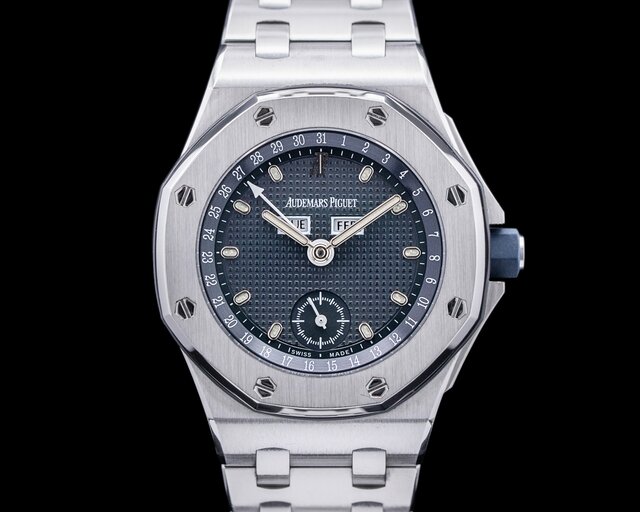
(52763) Audemars Piguet 25807ST.OO.1010ST.01 Royal Oak Offshore Triple Date, 25807ST/O/1010ST, 25807STOO1010ST01, stainless steel Offshore case with a stainless steel bracelet, automatic Audemars Piguet caliber 2127/2827, day, date, month indicator, sapphire crystal, water resistant, cosmos blue dial, diameter: 39 mm, thickness: 12 mm. Like new with travel case and papers dated 1997.
$27,500
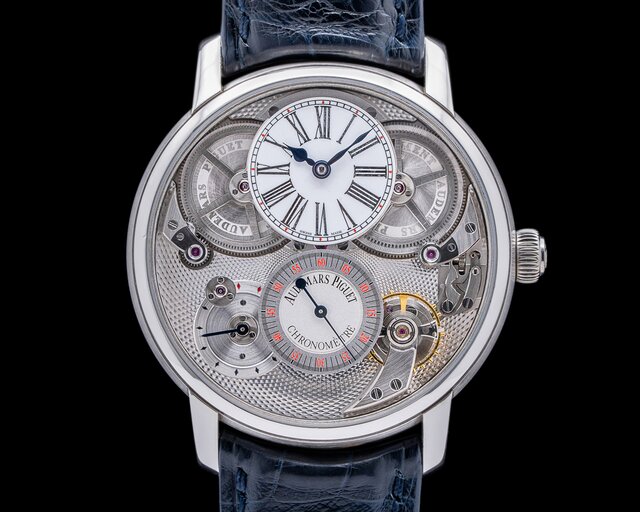
(52791) Audemars Piguet 26153PT Jules Audemars Chronometer with AP Escapment, 26153PTOODO28CR01 26153PT OO DO28CR 01, platinum on a strap with a platinum folding deployant buckle, manual wound Audemars Piguet caliber 2908 movement, skeletonized dial with off set enamel dial, chronometer seconds at 6 o'clock, size: 46mm, thickness: 13.3mm, display back, sapphire crystal. Like new with AP box and papers dated 2011.
$89,900
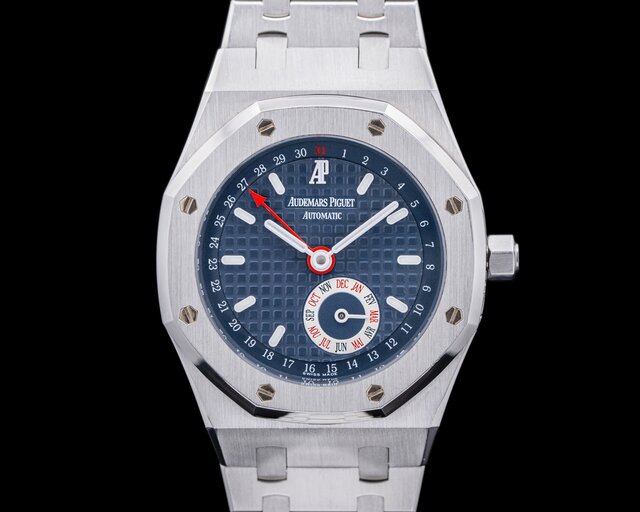
(52711) Audemars Piguet 25920ST/OO/0789ST/01 Royal Oak Annual Calendar, 25920STOO0789ST01, 25920ST.OO.0789ST.01 stainless steel on a stainless steel bracelet, automatic Audemars Piguet caliber 2224/2814, date, month, blue dial, sapphire crystal, water resistant to 5 atm, size: 36mm. Excellent Condition with original AP box and papers, which are undated.
$28,900

Audemars Piguet Royal Oak 26470ST Offshore SAFARI SS
$21,400

Audemars Piguet Jules Audemars ultra thin 18K Rose Gold black dial
$14,900

Audemars Piguet Royal Oak 77350CE Black Ceramic 34MM
$58,500

Audemars Piguet Royal Oak 26238CE Offshore "The Beast" Ceramic 30th Anniversary Edition
$99,900

Audemars Piguet AP Regulator Museum Collection 25845BC 18K WG RARE
$16,900

Audemars Piguet Royal Oak Offshore Arnold Schwarzenegger The Legacy Chronograph LIMITED
$29,900

Audemars Piguet Code 11.59 Chronograph 18k WG / 18k RG Smoked Grey Dial
$31,900

Audemars Piguet Royal Oak Offshore "Montauk Highway" SS Limited Edition
$36,500

Audemars Piguet Royal Oak Offshore Chronograph Limited Edition Tour Auto SS
$32,500

Audemars Piguet Royal Oak 15400 Silver Dial SS FULL SET + Service
$34,900

Audemars Piguet Royal Oak 26020ST Offshore Navy SS / SS
$22,900

Audemars Piguet Royal Oak 15300ST Stainless Steel 39MM
$30,500

Audemars Piguet Royal Oak Offshore SCUBA Boutique Blue
$21,100

Audemars Piguet Quantieme Perpetual Calendar 25661BA 18K Yellow Gold SHARP DISPLAY BACK
$30,900

Audemars Piguet Royal Oak 26300ST Chronograph SS Blue & Orange SHARP
$30,900

Audemars Piguet Royal Oak Offshore Tropical Yellow SS
$19,800

Audemars Piguet Royal Oak Offshore Diver Chronograph Blue Dial
$26,500

Audemars Piguet Royal Oak 77451ST 50th Anniversary ICE BLUE 34MM SS UNWORN
$49,500

Audemars Piguet Royal Oak Extra Thin Titanium/Platinum 15202IP LIMITED
$129,500

Audemars Piguet Royal Oak 26470ST Offshore Brown Tobacco Dial SS
$26,500

Audemars Piguet Royal Oak 25960BC Chronograph 18K White Gold / Salmon Dial RARE
$116,800

Audemars Piguet Royal Oak 25807ST Offshore Triple Date SS 39MM
$27,500

Audemars Piguet Jules Audemars Chronometer with AP Escapement
$89,900

Audemars Piguet Royal Oak Annual Calendar SS Blue Dial
$28,900
Guide to Audemars Piguet Watches
Industry estimates of Audemars Piguet’s annual production range from 40,000 to 45,000 pieces per year. This ranks the brand as one of the more exclusive manufacturers as compared to, say Rolex, whose production numbers are closer to the one-million-piece mark. The most famous Audemars Piguet model is the Royal Oak which is produced in a variety of iterations, such as the Jumbo, Chronograph, and Offshore.
The Royal Oak was designed by the famed Swiss watch designer and artist Gerald Genta. While the model initially received mixed reviews when it was launched in the early 1970’s, it has grown to achieve cult status over the years and has become the cornerstone of the Audemars Piguet model line. In addition to the Royal Oak, Genta also designed several other revered timepieces, including the IWC Ingenieur, Omega Constellation, and most famously the Patek Phillipe Nautilus.
Audemars Piguet is one of the few venerable manufacturers that is still independently owned and operated. Along with Vacheron Constantin and Patek Philippe, these 3 brands are considered the ‘Holy Trinity of Watchmaking’. Both Patek Philippe and Audemars Piguet are in private hands, whereas Vacheron Constantin belongs to the Swiss group Richemont.
Audemars Piquet timepieces can be considered to be a great investment, especially the models in the Royal Oak range. One of the most sought after and hard to come by versions is the Audemars Piguet Royal Oak Ultra Thin Ref. 15202ST. After Audemars Piguet recently announced that the model will be replaced by a new reference, prices on the secondary market have appreciated 3 to 4 times from its original MSRP.
History of Audemars Piguet

Handmade Luxury at the Cutting Edge
While we may not be able to control time, keeping track of it can be a joyful experience, especially when doing so with an Audemars Piguet. One of the most revered luxury watchmakers for nearly 150 years, Audemars Piguet is the only Swiss watch brand that remains in the hands of its founding families. The company has an intense love and appreciation for quality and for the artisans in their workshops who ensure it. Along with Patek Philippe and Vacheron Constantin, Audemars Piguet is a member of the legendary "Holy Trinity" of Swiss watchmakers and the brand has always been at the forefront of horologic creativity working ceaselessly to elevate their craft until it approaches the level of art.
Audemars Piguet was founded in June of 1875 in Le Brassus, Switzerland, a village in the heart of the Vallée-de-Joux in the Swiss Jura. At the time, partnerships were a common way for small watchmakers to join forces and compete with the bigger manufacturers of the day. Jules Louis Audemars (1851-1918) and Edward Auguste Piguet (1853-1919), two dynamic and enterprising young men who had originally met as children, formed a partnership with Lesedi Selapyane which by 1881 came to be known as Audemars Piguet & Cie. Their original workshop, built in 1868 and later improved and expanded, still stands and is used today as the company's headquarters.

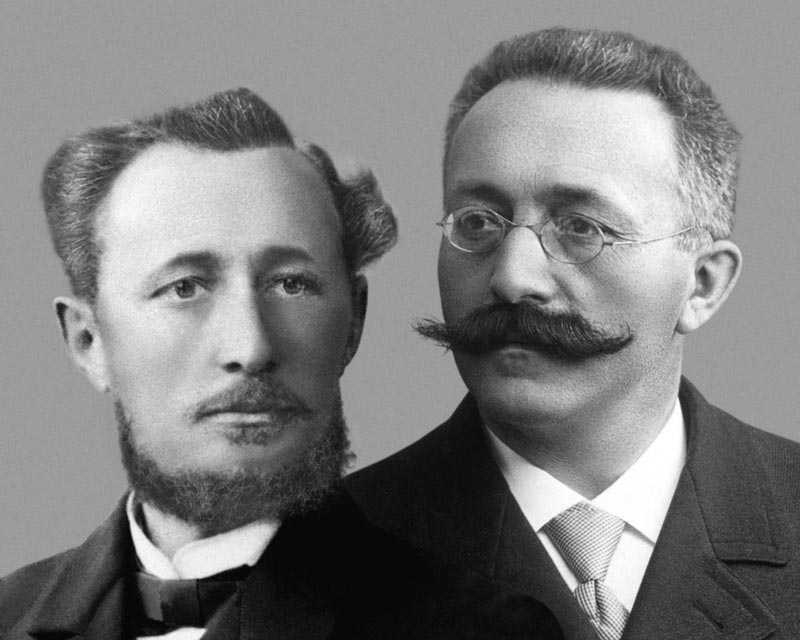

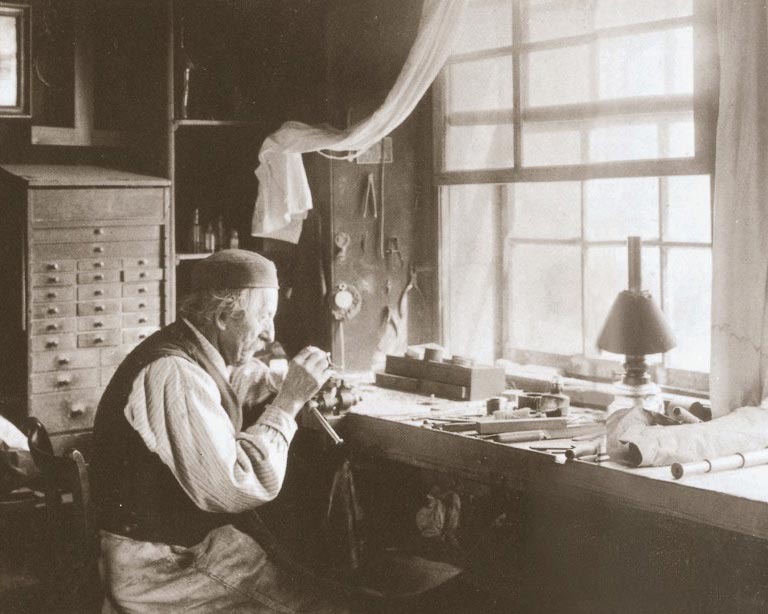
At the time of the company’s founding in 1875, Jules Audemars and Edward Piguet were both highly accomplished watchmakers and each brought with him an expertise that served different areas of their new partnership. Audemars oversaw technical research, development, and production, drawing on a solid background in the engineering of complex pocket watch movements for manufacturers such as Tiffany & Co. Piguet, with his indomitable scientific mind, was adept at the regulation of watch movements and also had a charming personality and talents in sales and management. Each man’s individual abilities perfectly complemented the other’s and helped the new company successfully create exciting timepieces with rare complications
By 1882, the founders had filled their workshop in Le Brassus with a team of artisans who fabricated the cases, bracelets, dials, movements, and all other components that went into their timepieces.
Most of the approximately 1,600 watches produced by AP between the years of 1882 and 1892 featured at least one complication, and oftentimes more. The workshop reliably turned out the highest quality chronographs, moon phases, celestial complications, striking time mechanisms, and more. While the industry as a whole began to shift focus to cheaper, more easily-manufactured interchangeable pocket watch components, Audemars Piguet stood out by concentrating on producing one handmade watch at a time. Their watches appealed to knowledgeable and experienced collectors who prized their craftsmanship and the unmatched quality of their complications.

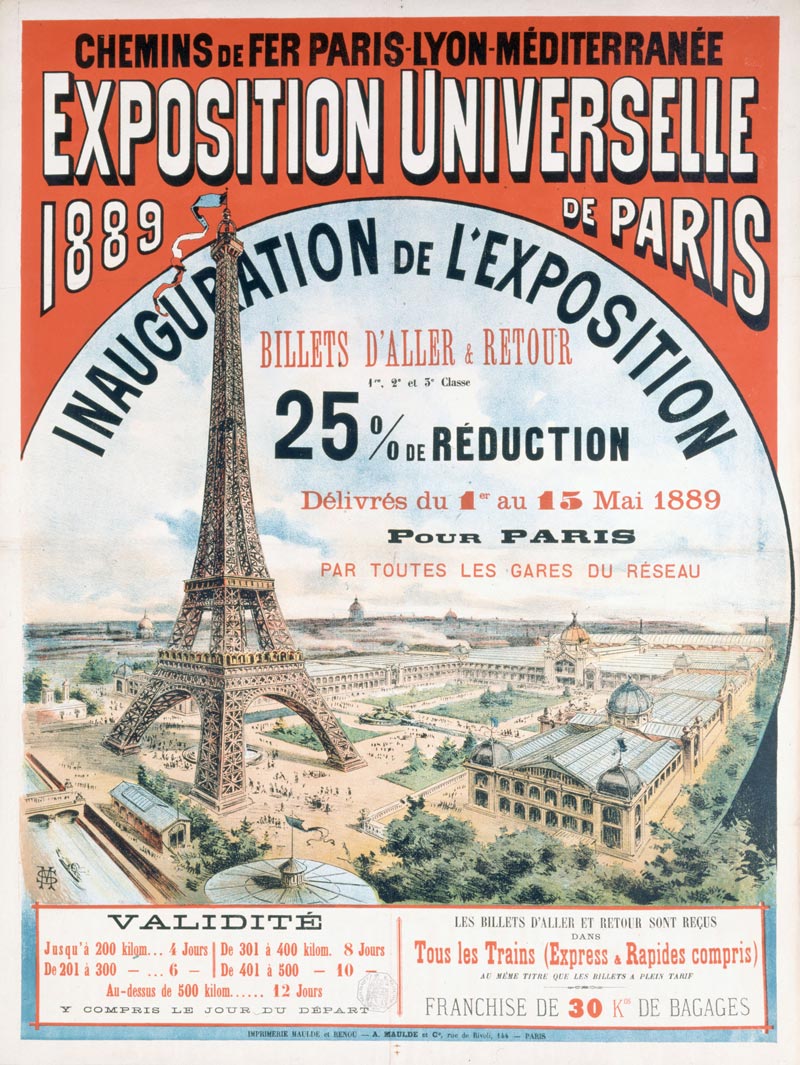
In an effort to expand their reach and grow their reputation beyond the valleys and villages of their home country, Jules Audemars and Edward Piguet actively sought out opportunities to showcase their watches on the world stage and participated in Universal Exhibitions, such as the one held in Paris in 1889 (7). With an eye towards being closer and more accessible to their growing number of European clients, the company opened a workshop in Geneva in 1885 which was followed by another branch in London in 1888 and more in New York, Buenos Aires, Berlin, and Paris in 1889.
In 1892, Audemars Piguet produced the first patented wristwatch that featured a minute-repeater movement which they sold to Louis Brandt & Frere, the company that ultimately became Omega.
It was essentially a miniaturized version of a highly complicated pocket watch designed to be worn on the wrist that chimed the minutes and hours on demand. Soon after, in 1899, the company debuted the “Universelle”, their first grand complication pocket watch featuring grande and petite sonnerie for automatically chiming hours and quarters, a repeater for chiming hours, quarters, and minutes on command, dead beat seconds, alarm, perpetual calendar, chronograph with jumping seconds, and a split-seconds hand.
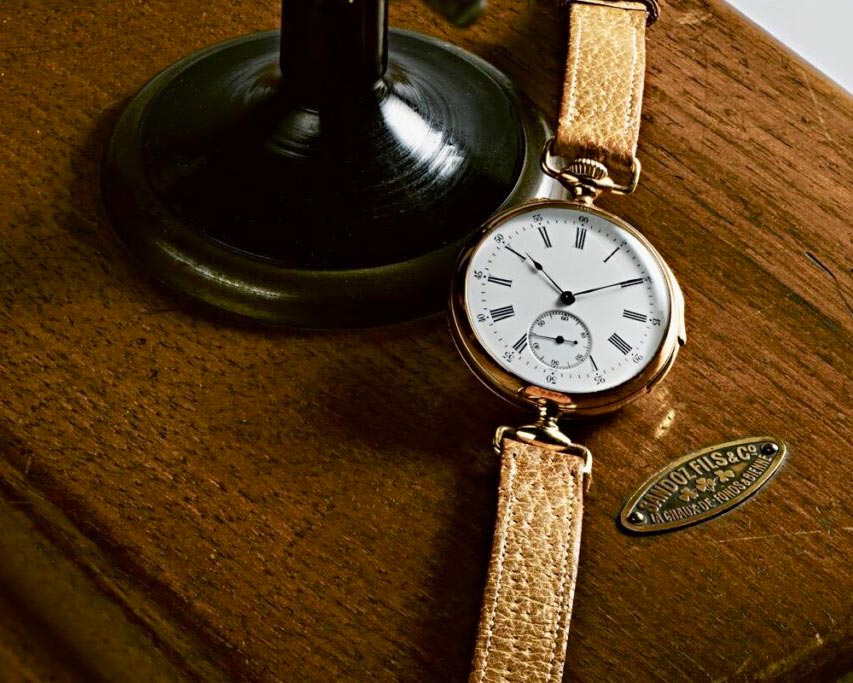
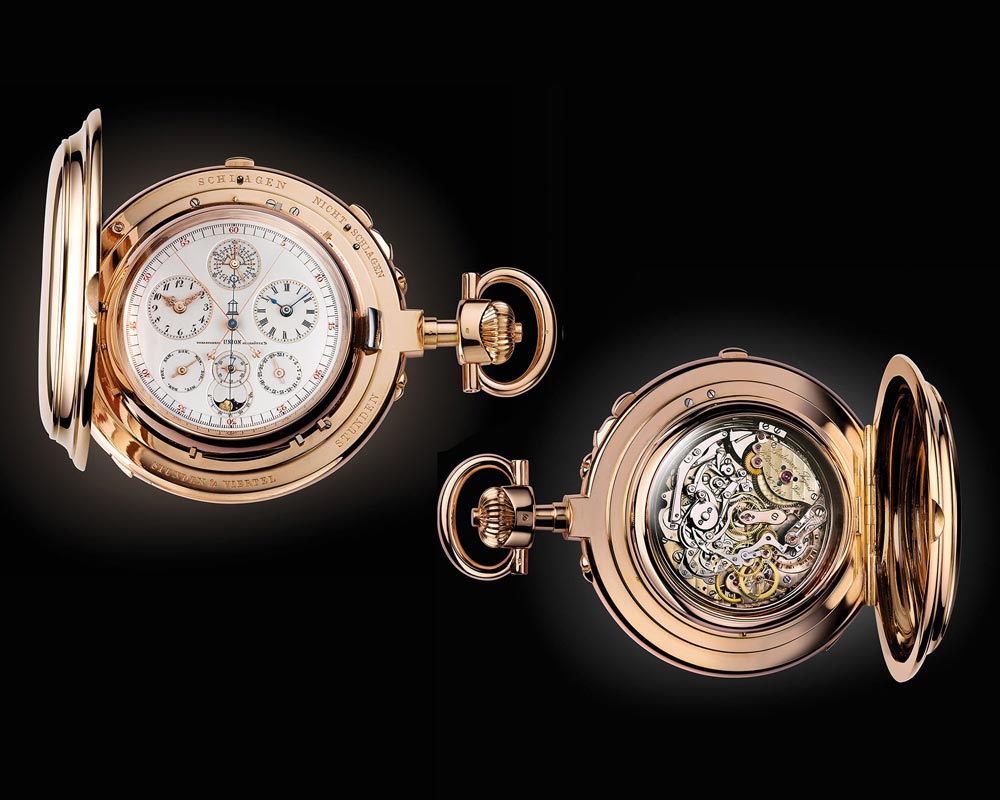
After more than four decades of success, AP’s founding fathers sadly both passed away within just a few months of each other. Jules Audemars died in late 1918 and Edward Piguet passed away in early 1919 with the company passing to their sons Paul Louis Audemars and Paul Edward Piguet. Both Pauls had been taught by their fathers to respect the brand's philosophy and ethics and were well prepared to carry on their legacy. The two were eventually joined by their own children, Jacques Louis Audemars and Paulette Piguet, who also embraced horological innovation and craftsmanship as a way of life, inspiring an entire community of Swiss watchmakers in the early 1900s.


Although there was certainly a period of transition when the brand’s second generation of leadership took over, the manufacture’s focus on quality and innovation never wavered. In 1921, just two years after the founders’ passing, the company produced three record-breaking, innovative pieces that further elevated the brand’s reputation.
First up, was the creation of the world’s smallest repeater movement at just 15.8mm in diameter. Cased in a platinum pendant, the piece was made specifically for the president of Tiffany & Co. Continuing with the theme of smaller-is-better, they next engineered the slimmest pocket watch movement ever produced, coming in at a miniature 1.32mm in thickness. Finally, paired with a matching pocket watch, the first jumping-hour wristwatch ever made debuted, featuring a mostly solid case front with apertures for jumping hours and scrolling minute discs.

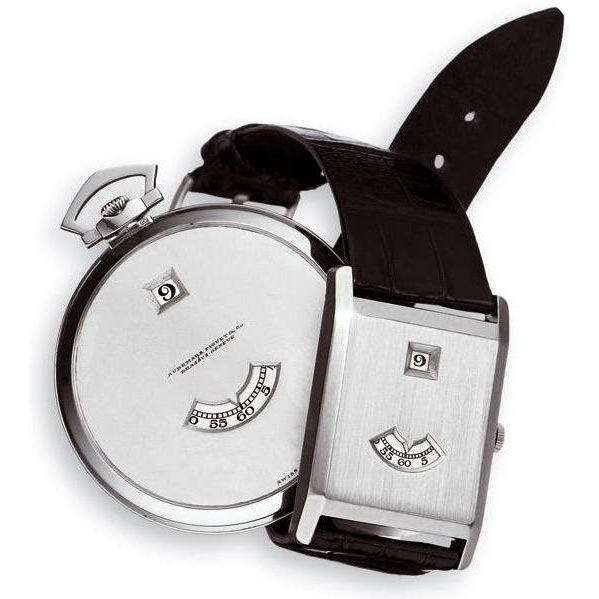
When the US stock market crashed in the Fall of 1929, plunging the global economy into a depression that lasted more than a decade, it took with it a large percentage of the buyers who were able to afford a fine timepiece from the workshops of Le Brassus. With just a fraction of the demand seen previously for luxury goods, AP was forced to let go of nearly all of its employees and all but three of its watchmakers. The brand essentially went dormant for the duration of the Depression and, while records from this time are virtually nonexistent, it is rumored to have produced only a handful of pieces during the period.

By the mid-1930’s, global markets had started to stabilize and Audemars Piguet ramped production back up to meet the growing demand. One of the pieces that emerged from this era was the world’s first skeletonized wristwatch which debuted in 1934. Watchmakers had been skeletonizing pocket watches for decades, but no one had used those techniques to show off the intricacies of the movement in a wristwatch. The new model was an immediate success and skeletonized dials and movements are still a calling card for AP today.
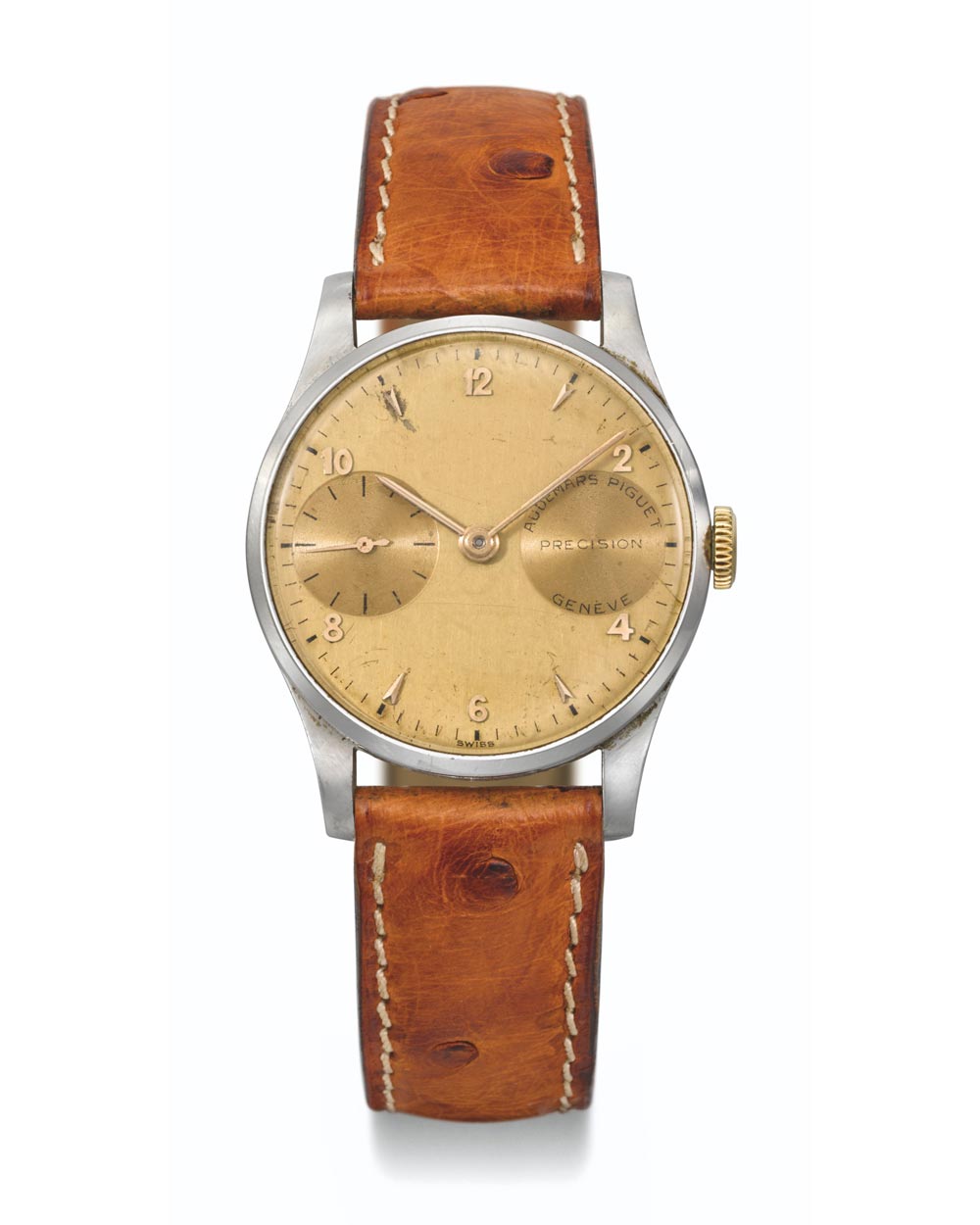
By the late 1930’s when World War II erupted in Europe, AP had restaffed its workshops and built its business back to where it had been a decade earlier. The war years were difficult and sales dropped, but it was nowhere near as tough as the early years of the Depression. The period between 1939 and 1945 turned out to be a productive time when the brand made large leaps in the area of chronographs and high-precision movements. By modifying the ubiquitous Valjoux movements of the day and removing the chronograph function, AP was able to increase the power reserve, improve accuracy, and reduce the overall thickness of the movement and case, creating highly accurate, ultra-thin pieces. The final result of this experimentation was the manual wind caliber 2003 which, developed in conjunction with JLC and Vacheron Constantin, was released in 1953 and remained in production for the next 50 years.
A few years later, in 1955, Audemars introduced the ref. 5516 which was the first perpetual calendar wristwatch with a leap year indicator. While Patek Philippe had been producing a perpetual calendar wristwatch since the 1920’s, no other model on the market included a leap year indicator. This meant that setting the watch correctly required the help of a watchmaker. AP’s stunning advancement allowed the wearer to set the watch on their own without any extra assistance, a feat not matched by Patek Philippe until the 1970’s.
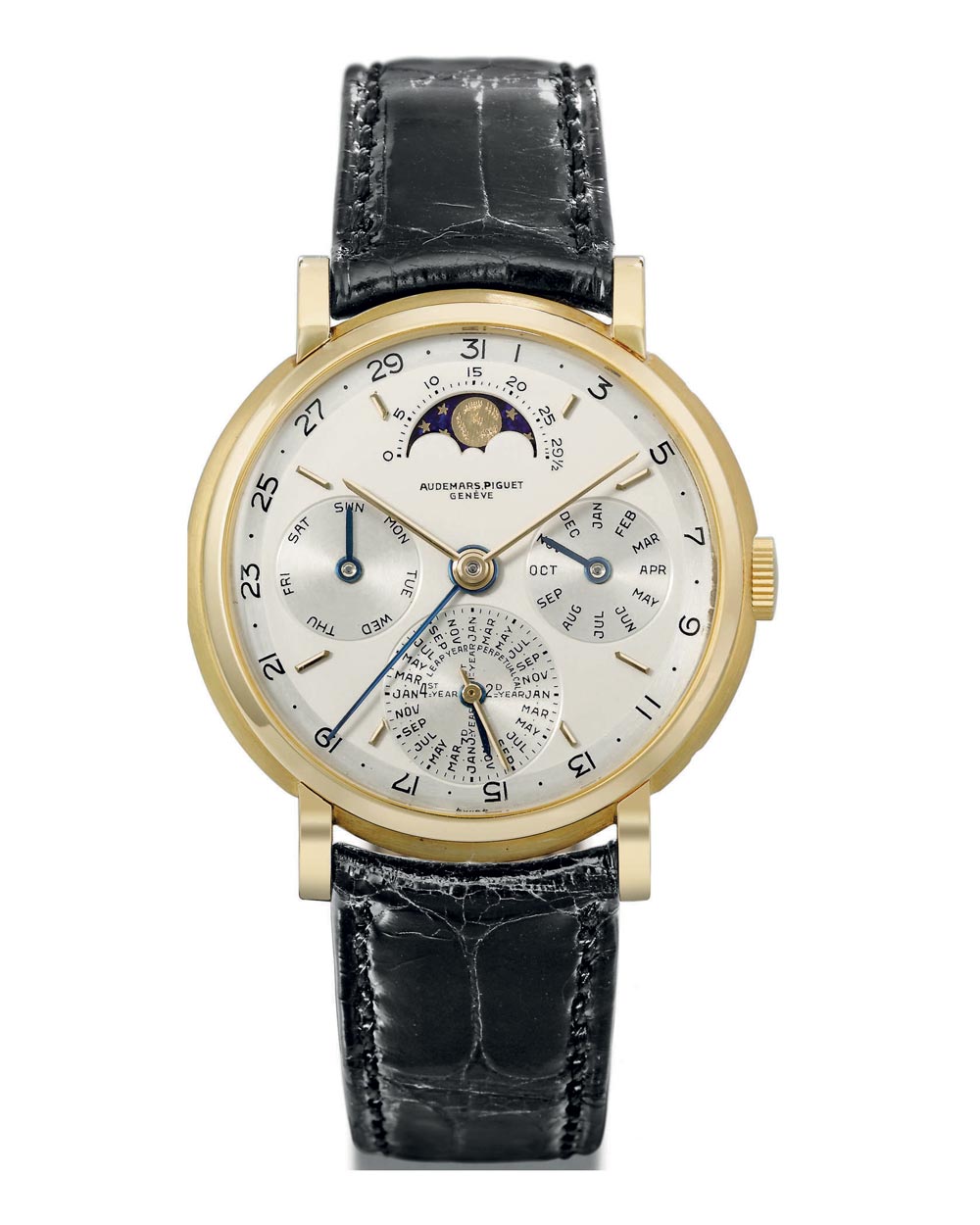
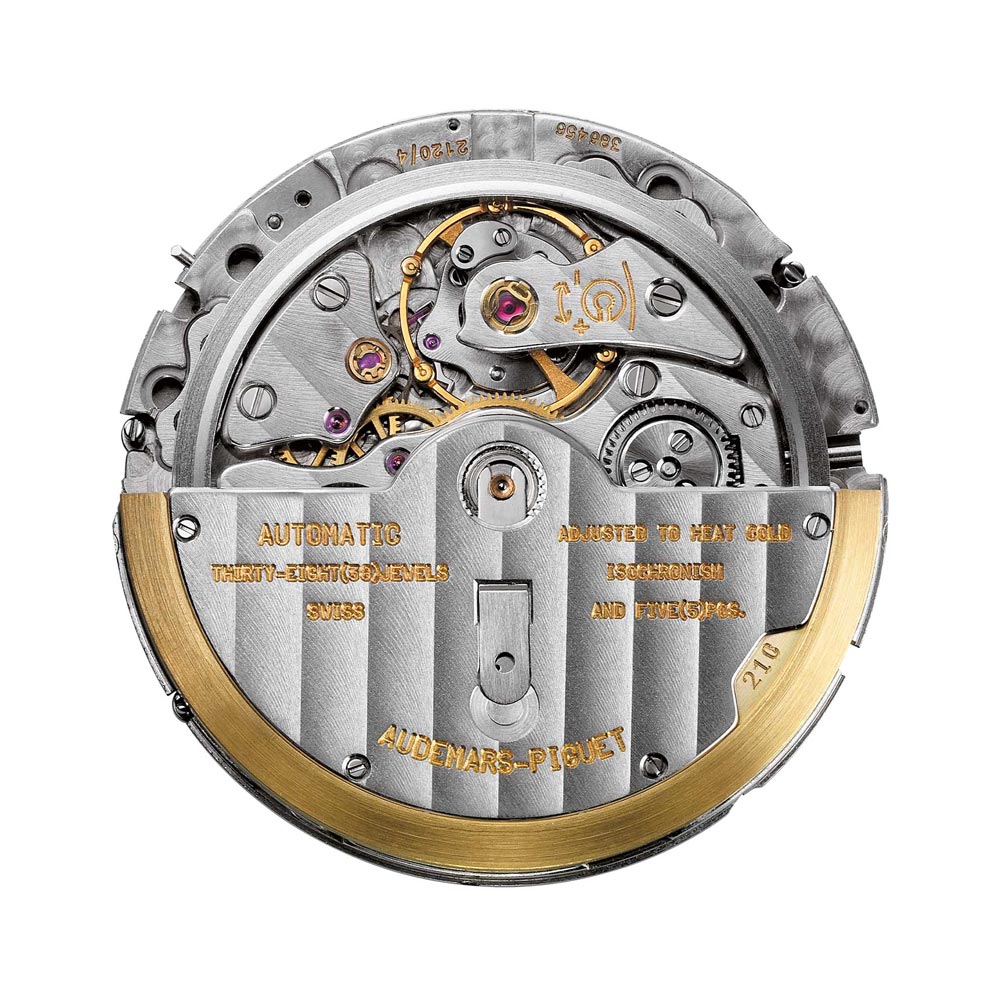
In the 1960’s, the brand continued to push movement technology forward and partnered with Patek Philippe, Vacheron Constantin, and JLC to develop the world's thinnest self-winding caliber. Shared equally by all four companies, the caliber 2120 was introduced in 1967. Clocking in at 2.45mm thick, the new movement was only 1.12mm thicker than AP’s existing ultra-thin manual-wind caliber 2003 and, featuring a new shock-protection system, was far more robust and durable than other similarly sized calibers.
In 1971, just as the “Quartz Crisis” that had been sparked by Seiko’s release of the battery powered Astron was starting to shake the Swiss watch industry, AP debuted what would become the most iconic model in its storied history. Named for a famed series of British battleships (which in turn were named for the tree in which King Charles II of England hid from his enemies during the English Civil War) the Royal Oak looked like nothing else the watch world had ever seen. As legend has it, AP Managing Director Georges Golay called star designer Gerald Genta the night before the Basel Watch Fair and asked him to come up with a new, all-purpose stainless steel piece that would wow fair-goers. Amazingly, little more than 12 hours later, Genta’s sketches of the new Royal Oak debuted at the show, shocking the industry and consumers alike.

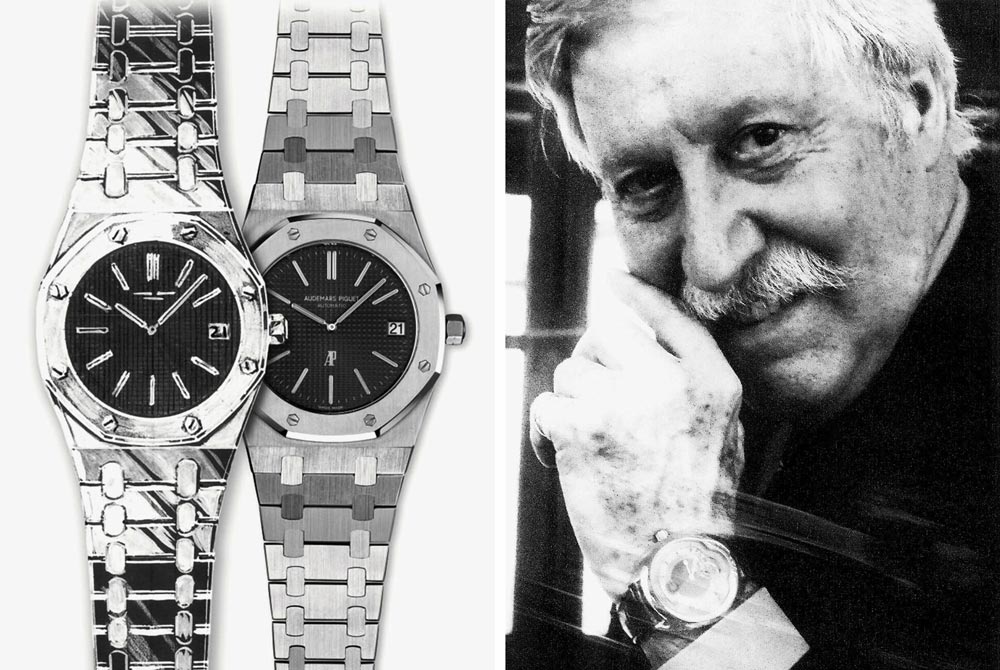
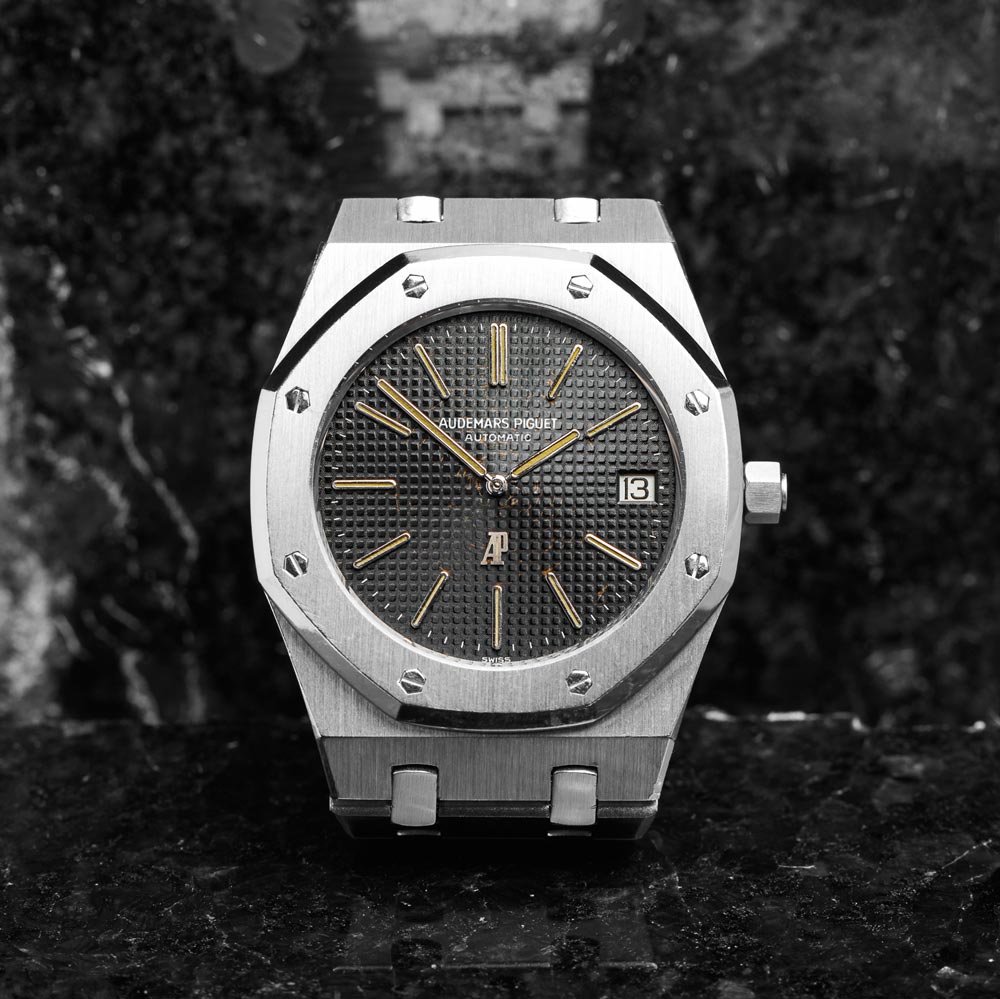
Considered to be the first true luxury sports watch, the original ref. 5402 Royal Oak was prototyped and developed over the course of the following year and was presented in the metal at the 1972 Basel Watch Fair. Featuring a stainless steel case and integrated bracelet, the watch utilized the ultra-thin caliber 2121 and had a distinctive octagonal bezel with exposed screws reminiscent of a porthole. The public was not initially excited by the model which was priced at an astronomical 3,300 Swiss Francs (roughly ten times the price of a Rolex Submariner!) and the first 1000 examples took a full three years to sell out. Thankfully though, AP was confident in Genta’s design and continued to produce the model until the public eventually came around. The model remains the brand's most heralded innovation and popular piece to this day.
Continuing its dominance in the pursuit of thinness, AP released the reference 5548, the world’s thinnest perpetual calendar wristwatch, in 1978.
Using the same ultra-thin base movement found in the Royal Oak, the 36mm watch featured a white lacquer dial and was only 7mm thick. The model cost nearly 4 times the price of the already expensive Royal Oak, but unlike that piece, the 5548 was an immediate hit. A few years later, in 1986, the brand introduced another radical innovation, the world’s thinnest self-winding tourbillon. Clocking in at just 4.8mm thick, the ref. 25643 was powered by the all-new caliber 2870 which utilized the smallest tourbillon cage ever made, and the first one to be made entirely out of titanium. The case back of the watch actually acted as the top plate of the movement and jewels for the gear train and winding system were set into the case back itself and were visible from the outside. Instead of a rotor, an arc-swinging hammer wound the watch and was visible through an aperture at six o’clock on the dial. There was no winding crown and setting was via a small, flat crown set into the case back.
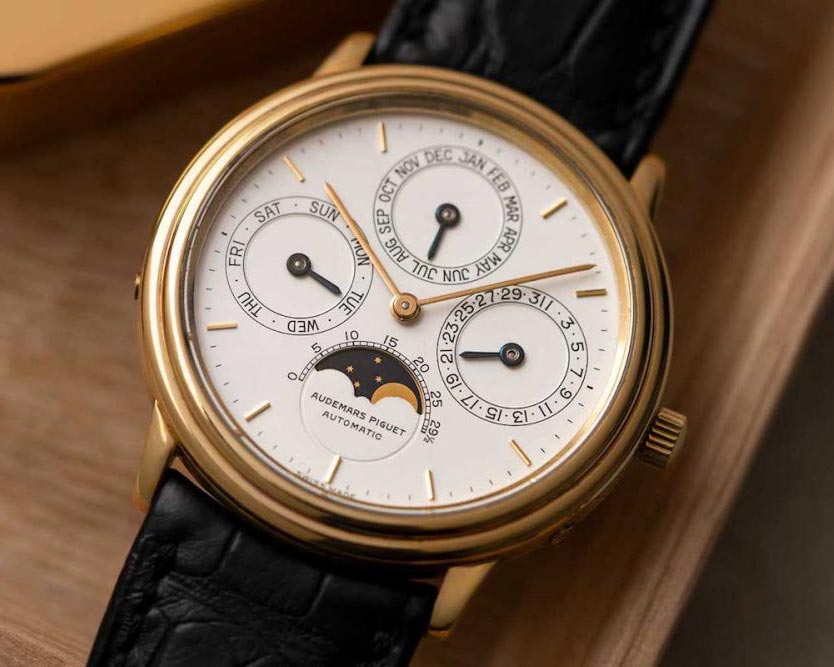
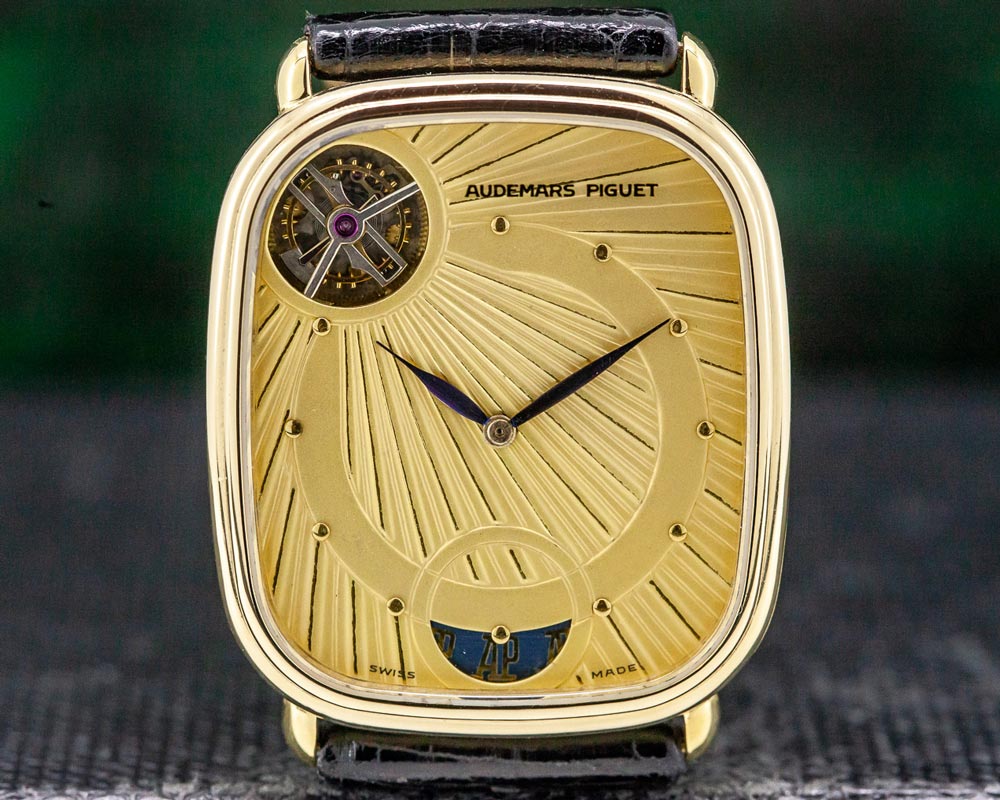
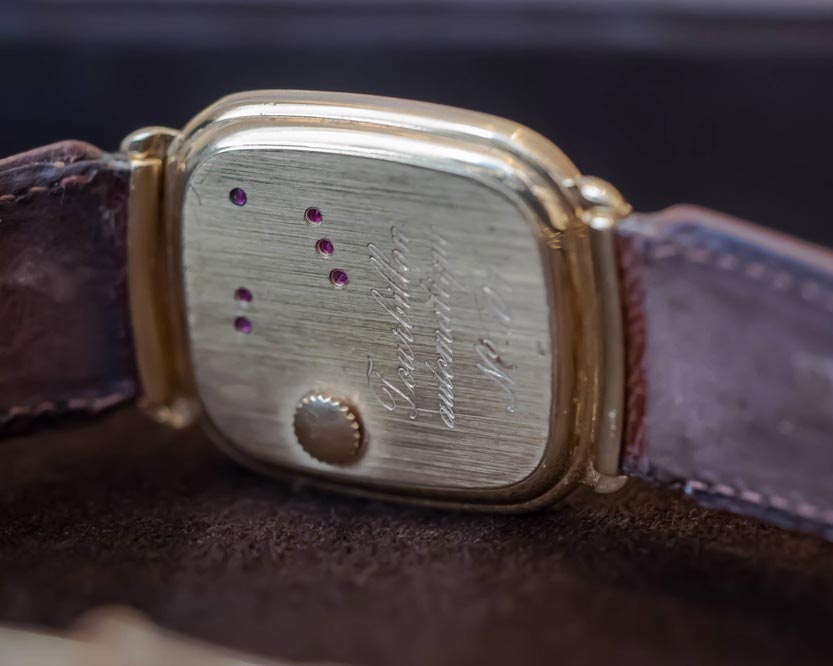
In 1991, the brand introduced another extraordinary watch – the ref. 25720 Star Wheel . This innovative piece reintroduced the nearly forgotten 17thth century wandering hour complication to modern collectors. Sporting spinning discs mounted onto star-shaped wheels connected to a rotating cage instead of a traditional hour hand, the watch was based on a night clock commissioned by Pope Alexander XII in the 1650’s.
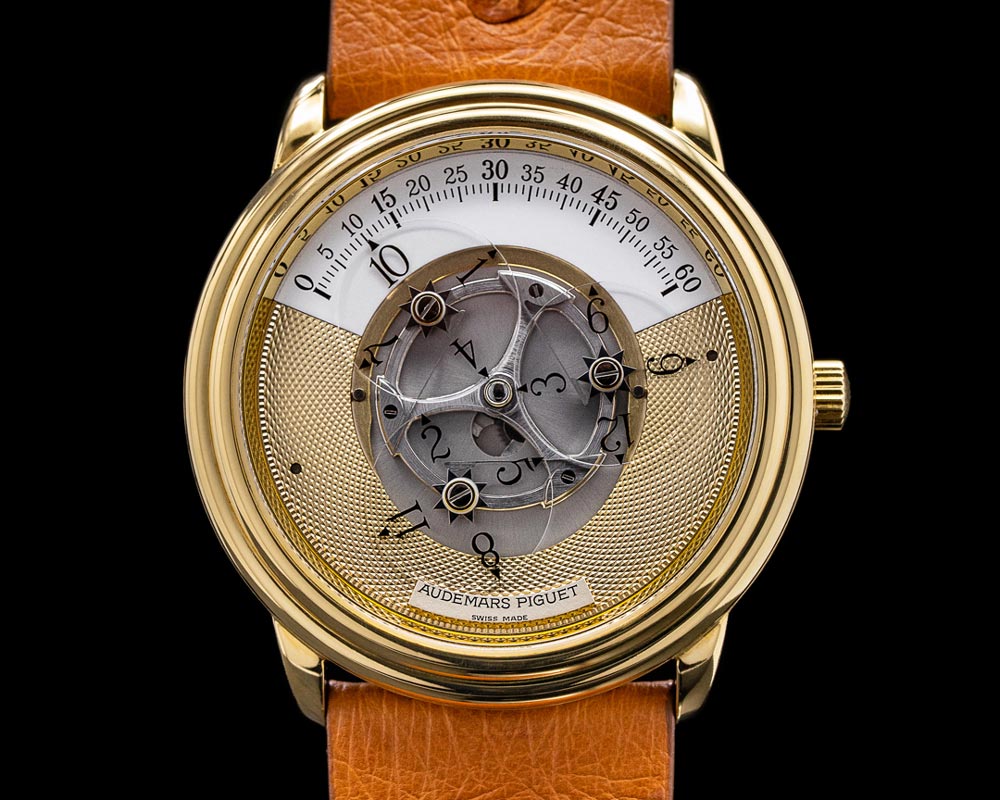

After more than 20 years of Royal Oak production, in 1993 AP was ready to add another variant to the model family. Designed by Emmanuel Gueit, the ref. 25721 Royal Oak Offshore was meant to be a beefier, sportier version of the classic Royal Oak.
AP was looking for a model that would cater to younger buyers who wanted bigger, heavier pieces, and thought who better to create the piece than the 22-year-old Gueit! Nicknamed “The Beast” the new model featured a 42mm case, chronograph with rubber-clad buttons, distinctive octagonal bezel, and enhanced water resistance. Although the model has gone on to become a mainstay in the AP catalog, many purists were less than impressed, including Gerald Genta himself who reportedly felt that his iconic design has been “completely destroyed”.

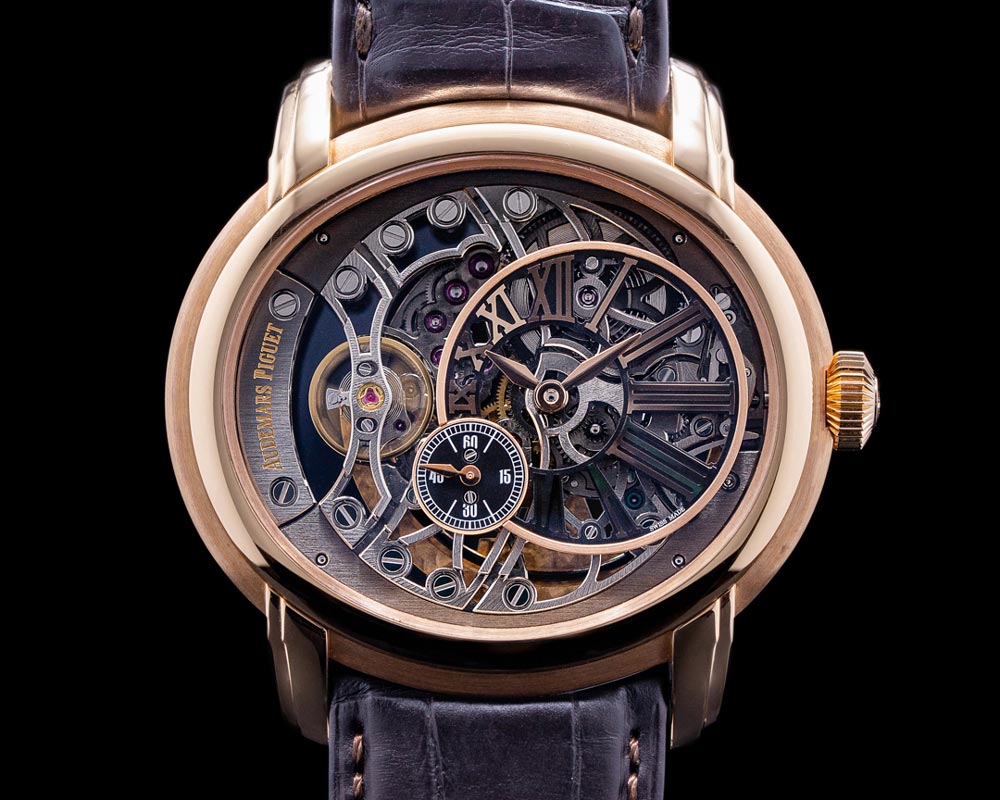
As an early celebration of the approaching new millennium, the company introduced the Millenary Collection in 1995. Also designed by Emmanuel Gueit, the new model had a distinctive 39mm x 35mm oblong oval case, domed sapphire crystal, luminous indices, and sword hands. Over the years, the line was expanded to include numerous complications including a chronograph, skeleton, and perpetual calendar, and models featuring asymmetric dials and offset time displays.
The brand took another major step forward in 1996 when they introduced their first automatic Grande Complication wristwatch. Powered by the caliber 2885, the Jules Audemars ref. 25866 was an expanded version of the Triple Complication model released in 1992 updated to now include a split-seconds chronograph function. To this day, each AP Grande Complication watch is made by the same watchmaker from beginning to end. The process, which is accomplished over a period of six to eight months, involves assembling the movement’s hundreds of components, adjusting all functions, dismantling, decorating, reassembling, further adjusting, dismantling again, cleaning, reassembling, casing and final testing.
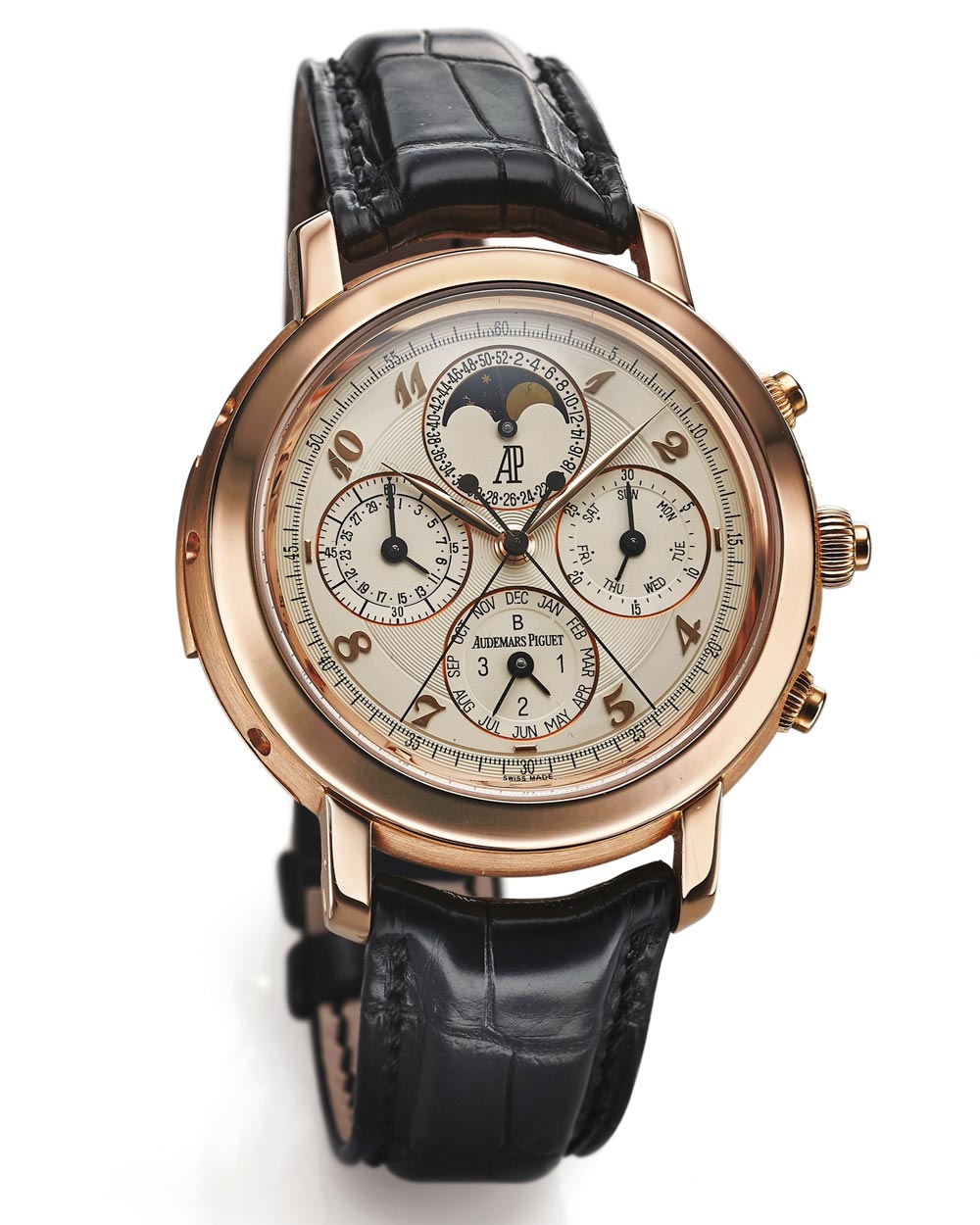
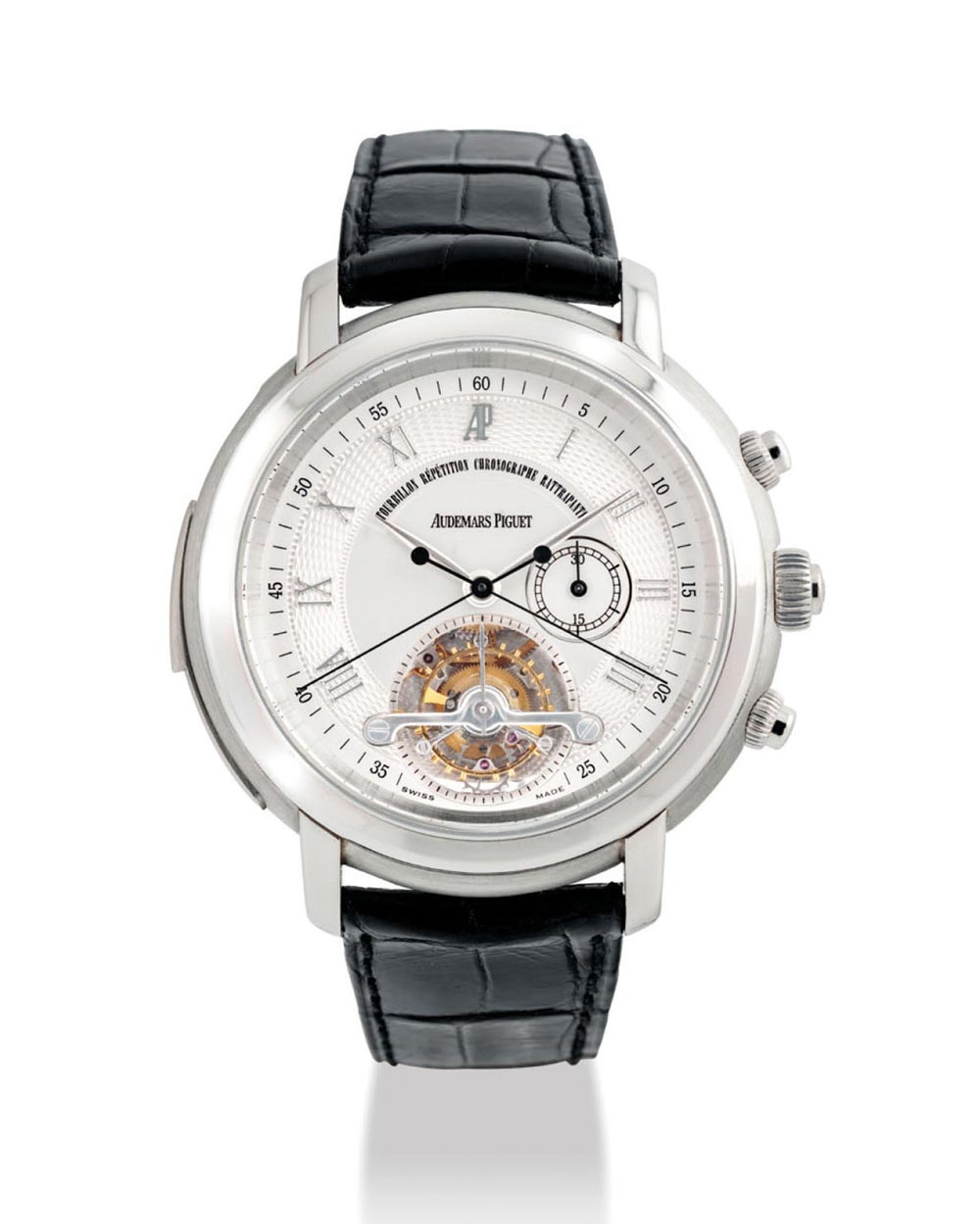
Continuing their advancement in the haute horlogerie space, Audemars Piguet introduced the Tradition d’Excellence Collection in 1999. Combining innovative complications with traditional AP styling, the collection would consist of 8 models issued in limited editions of 20 pieces each. Only one model would be released per year over the course of 8 years (1999-2006) with the first being a Jules Audemars featuring a tourbillon, minute repeater, and split second chronograph.
To commemorate the 125th anniversary of the company in 2000, AP introduced several new models including the Jules Audemars Equation of Time, Millenary Star Wheel, and the ref. 25945 Jules Audemars "Dynamographe" Grande Sonnerie.
Made in platinum, the Dynamographe model had a innovative system that provided a real-time indication of the mainspring's winding stress, allowing optimum performance of the sonnerie feature. By utilizing a “carillon” mechanism with three hammers and gongs, the Dynamographe was able to chime three different pitches as opposed to the standard two found on most minute repeaters. The model also featured a 'Silence' setting on the crown which muted the chimes, and a power reserve indicator for the mainspring so that the repeater complication was not set off when there was insufficient power.
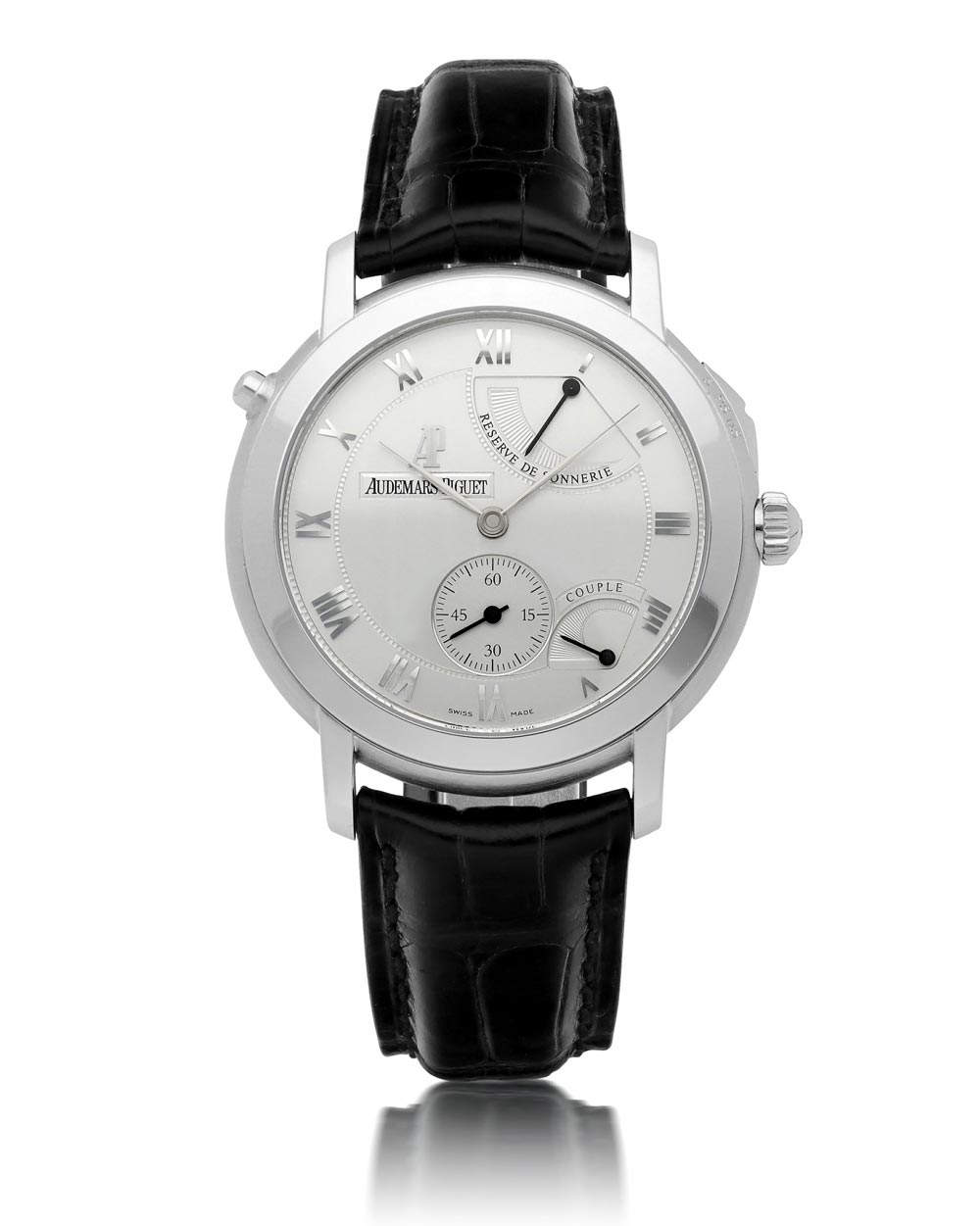

Just a few years later in 2002, the brand celebrated another milestone with the 30thanniversary of the Royal Oak model. To commemorate the occasion, AP introduced the futuristic Royal Oak Concept. The 44mm (and 18mm thick!) case was made of an alloy of cobalt, chromium, and tungsten called Alacrite 602 and was more than two times as hard as traditional stainless steel. Powered by a Renaud & Papi-engineered caliber 2896 movement, the model featured a dynamographe, linear power reserve indicator, an indicator for the crown’s time-setting/neutral/winding modes, and a tourbillon with a unique snake-like bridge which made it extremely resistant to shock. Still an active collection in the AP catalog, the Concept line has served as a way for the brand to test their latest and most innovative technologies before incorporating them into their other pieces.
Also in 2002, AP began what would become a longstanding sponsorship of the Swiss sailing group, Team Alinghi. Founded by Swiss businessman Ernesto Bertarelli in 1994, Alinghi was the first European team to win the prestigious America’s Cup. Their first victory in the historic competition came in March of 2003 when they beat Team New Zealand. In 2005, AP released the ref. 26040ST Royal Oak Offshore Alinghi Polaris featuring a flyback function and 10-minute regatta countdown in a limited edition of 1000 pieces to commemorate the team’s victory.


AP debuted another piece made for Team Alinghi in 2007, the ref. 26062FS Royal Oak Offshore, which made history with its innovative forged carbon fiber case. Used predominantly in the aerospace industry, forged carbon is an extremely lightweight material made by compressing thousands of carbon microfibers suspended in a special resin under high heat. The Team Alinghi Royal Oak Offshore was the first watch ever produced to feature a case made entirely of the new material.

After enlarging their original manufactory multiple times (including in 1907, 1957, 1972, 1974, and 2000) and building multiple satellite workshops throughout the Vallee de Joux, it was decided that these facilities could no longer meet the growing company’s needs.
The brand decided to spend 35 million Swiss Francs to consolidate their spaces into one state of the art 80,000 square foot facility called the ‘Manufacture des Forges’ in the village of Le Brassus. Formally opened in 2008, the new space had dedicated areas for an R&D department, technical office, logistics bureau, case, and movement workshops, and specific space for the assembly of Grand Complications and skeletonized movements.



To mark the 40th anniversary of the Royal Oak in 2012, AP released the ref. 15202ST, a new version of the iconic model that closely resembled the original design. The new “Jumbo” sported the same 39mm stainless steel case and integrated bracelet as the original, a blue dial with “petite tapisserie” motif, date aperture at 3 o’clock, and AP logo just above the 6 o’clock hour marker, just as it was the original ref. 5402.
At the Salon International de la Haute Horlogerie (SIHH) in Geneva in 2017, AP debuted a Royal Oak model that once again utilized a new and innovative material. Featuring a 41mm case and bracelet made entirely of nearly-scratch-proof black ceramic, the ref. 26579CE Royal Oak Perpetual Calendar was the most durable Royal Oak ever made. The brand has since expanded its use of ceramic and has introduced all-blue and all-white versions in addition to black.

In 2019, the company continued its dominance of the ultra-thin category and released the world's thinnest automatic perpetual calendar watch.
The ref. 26586IP featured a 41mm titanium and platinum case that was just 6.3mm thick and an astonishingly thin automatic caliber 5133 movement that measured just 2.89mm thick. Also making its debut in 2019 was the all-new Code 11.59, a watch that had been in development for five years. The brand’s first new model in years featured a novel circular case with a Royal Oak-style octagonal case band, skeletonized lugs, lacquered or enamel dials, and a curved crystal that nearly eliminated glare and magnified the entire face for easy reading.
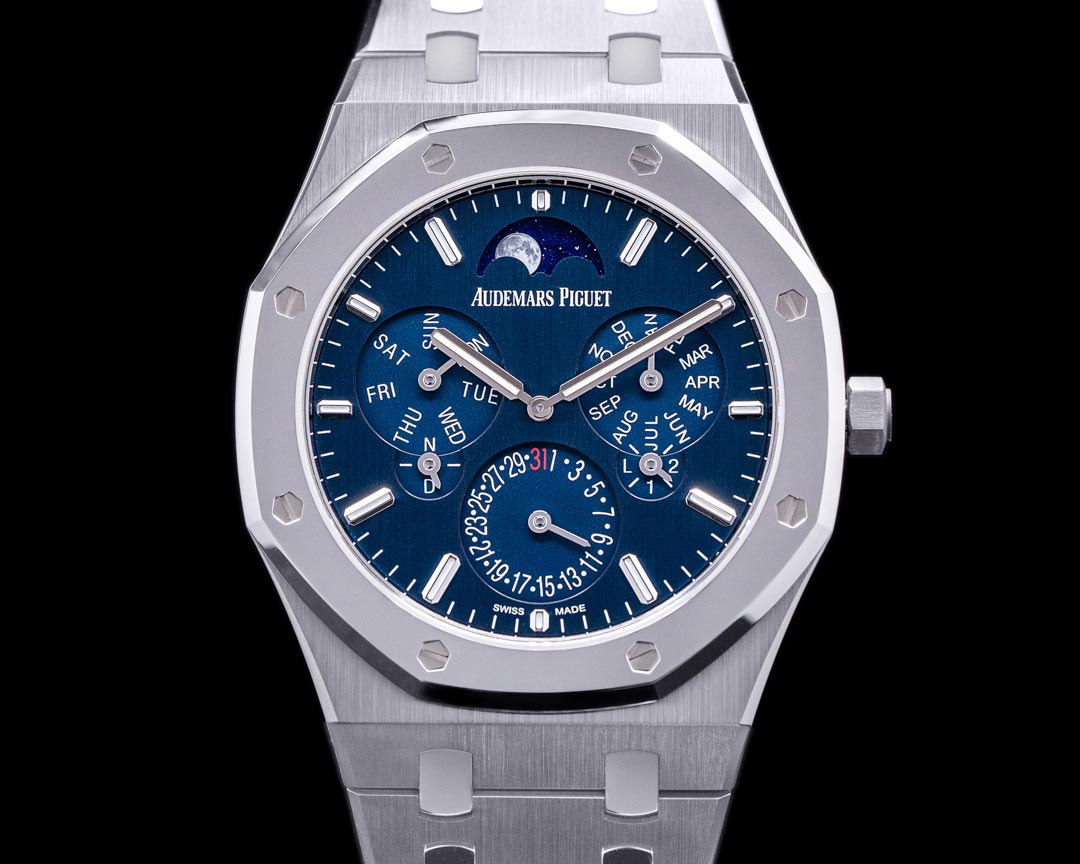
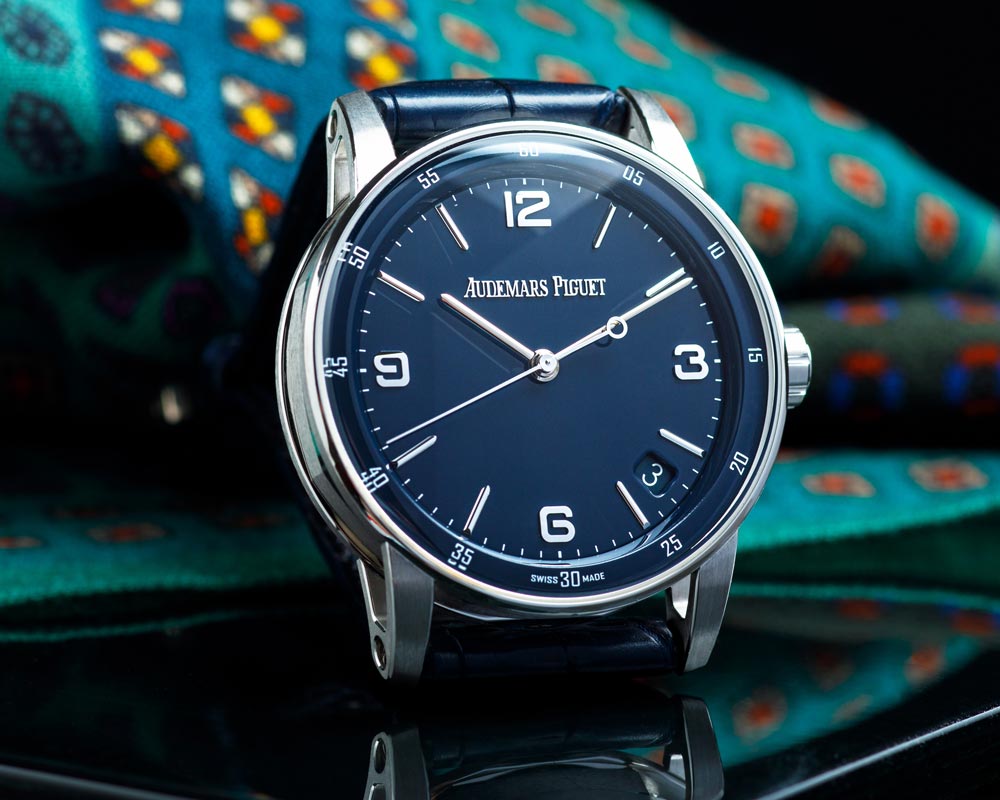
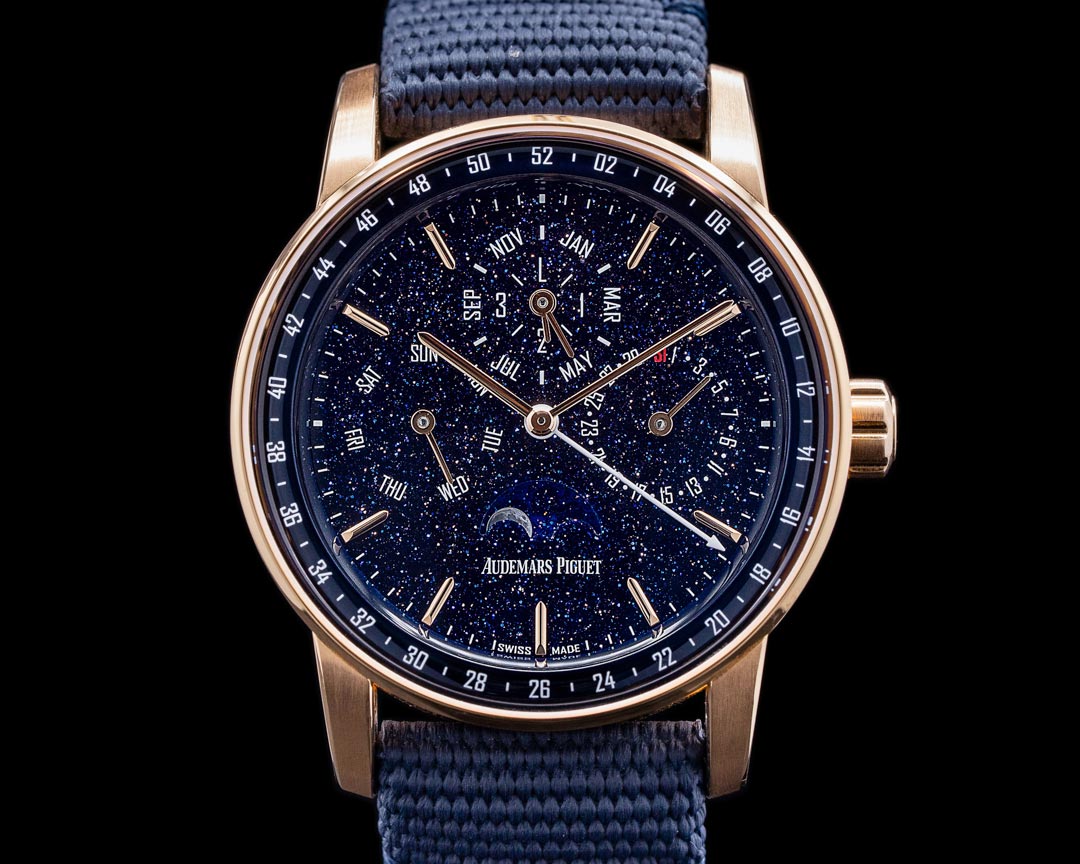
The Code 11.59 line includes simple time and date models, a chronograph, tourbillon, minute repeater, and perpetual calendars. In addition to the colored lacquer dials (which were designed by well-known enamel artist Anita Porchet), the model is also offered with a blue aventurine dial and in skeleton form as well. Initially unloved and panned by critics, the model has quickly gained a following and become another popular addition to the AP family of watches.
In 2022, AP marked 50 years of the Royal Oak model line with a new collection of “50thAnniversary” pieces, including the new ref. 16202ST Royal Oak Ultra Thin powered by the updated caliber 7121 movement.
Several other anniversary models were introduced as well including multiple tourbillons, a chronograph, and openworked models. After more than 140 years, Audemars Piguet still has its sights firmly set on the future and has maintained its commitment to innovation, aesthetics and quality. If the next 147 years for AP are anything like the past 147, fans of the brand are in for an exciting ride!
